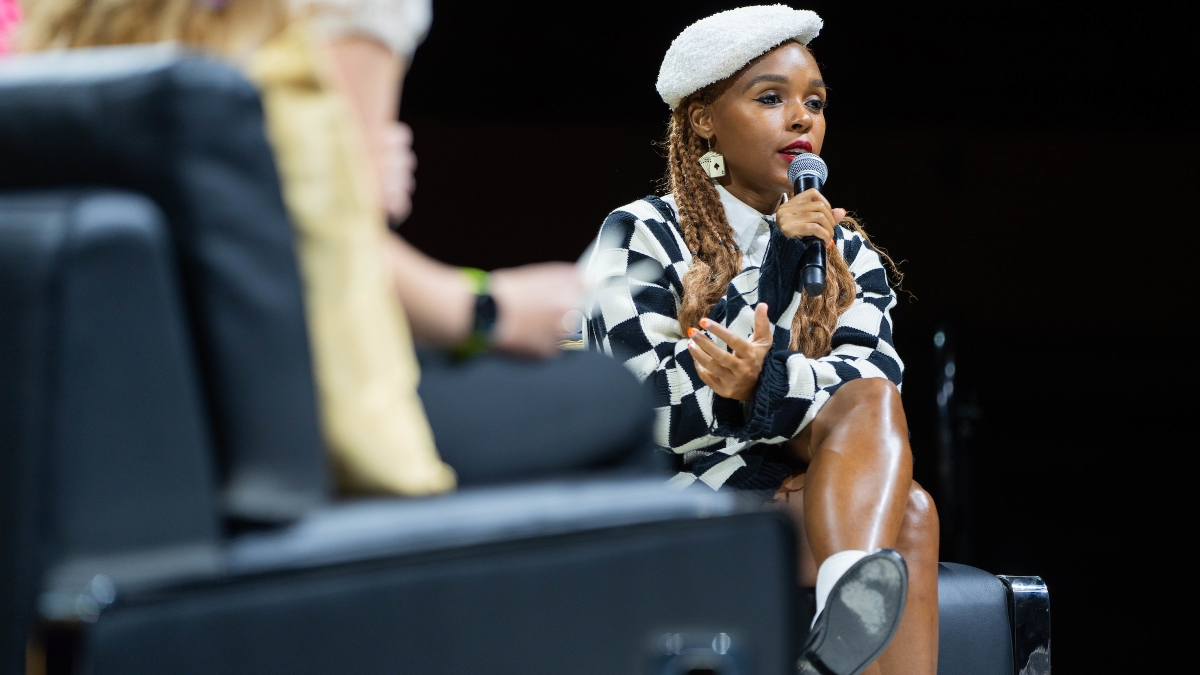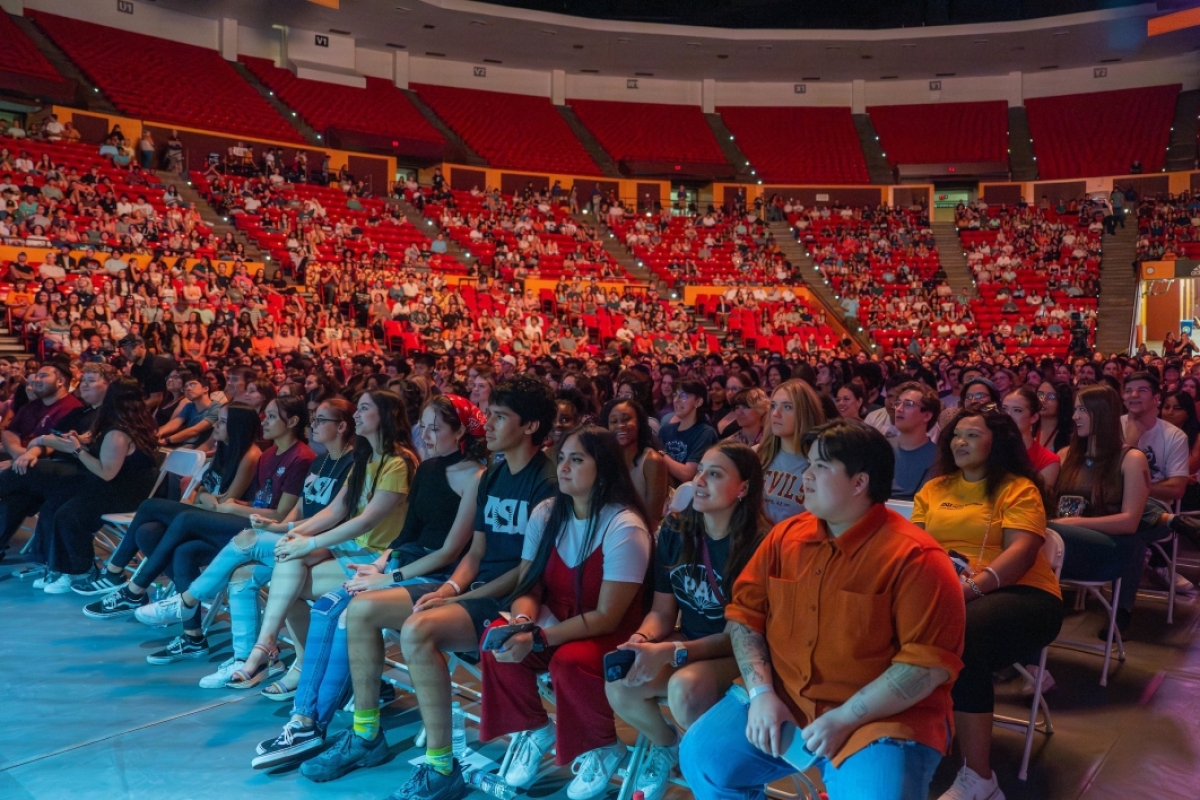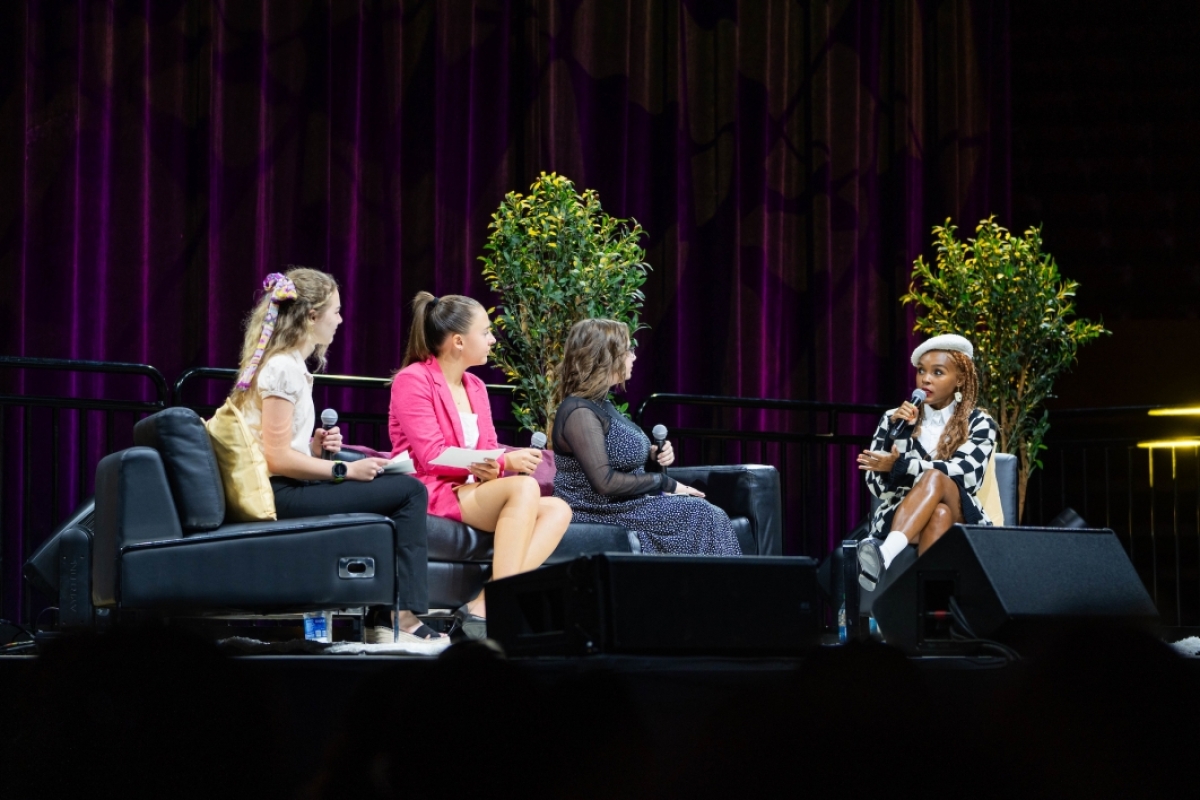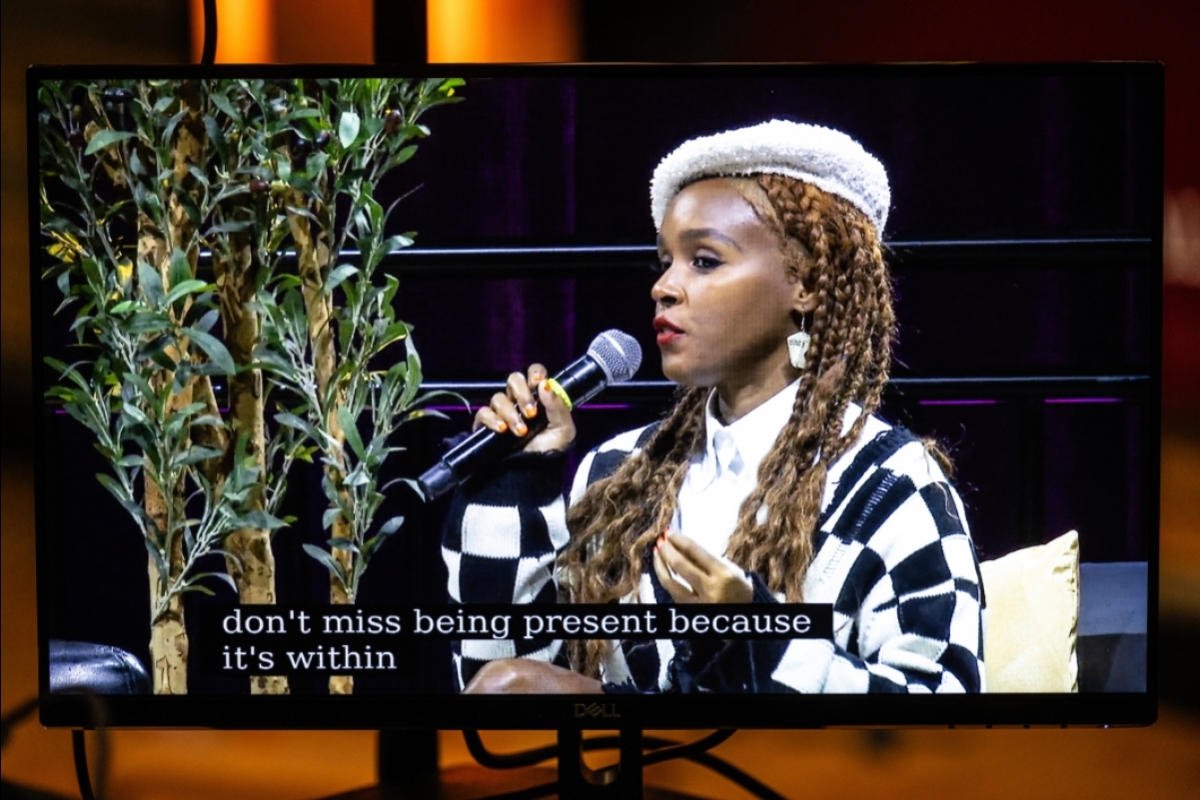Ask for help and surround yourself with kind people.
Actress and singer Janelle Monáe said that’s her prescription for finding balance in her busy life and also her advice to students starting the school year.
Monáe, the Fall Welcome speaker for Arizona State University this year, discussed her career and her strategy for self-care during a Q&A session at Desert Financial Arena in Tempe.
Monáe appeared in the recent movie “Glass Onion,” as well as the 2016 movie “Hidden Figures.” In June, she released her album "The Age of Pleasure," and last year, published her first book, "The Memory Librarian: And Other Stories from Dirty Computer.” She was recognized as the Trevor Project’s Suicide Prevention Advocate of the Year, serves as a co-chair to Michelle Obama’s When We All Vote initiative, and has established her own initiative, Fem the Future.
Here is some of her advice:
Ask for help: “I often have new goals I want to achieve or new eras I want to go into as an artist, and I have to admit that I don’t have all the answers. It’s a learning experience. I need to ask for help. When my schedule is too much, I shouldn’t be afraid to say something.
“Great leaders ask for help.”
Try to be present in the moment: “It’s a muscle – trying to stay present. We’re constantly thinking about what’s next.
“Staying present is so important to me because you’ll miss life if you’re constantly thinking about the future. As someone who considers herself a futurist, I also consider myself a ‘present tourist.’ It’s, ‘Oh, I’ve done my work today and now I’m with my parents and I can listen to my mom.’
“Those things add up and it matters that you don’t miss being present.”
Avoid trying to give an image of perfection: “When I think about image, I’m not going for perfection. Perfection can throw you off your game. Trying to live in that make-believe world is not a long-term strategy.
“If we’re trying to grow, we’re not in a perfect state. It’s through our imperfections that we get to be bold and get to the more updated version of who we are.”
Find your people: “Look for people who are kind and who seem like they have patience. You guys will be learning a lot about yourself as well as each other. Look for people who can give grace to themselves and to each other.
“This is a transformational time. And anything that is transforming will have some ugly stages.”
Monáe also talked about managing her multi-hyphenate career – singer, actress, writer, fashion icon, activist. To her, it’s all about the art of storytelling.
“I look at what I’m doing. If it’s film, it’s art. When I’m making an album, it’s art. When I’m writing a book, it’s art. Fashion is art,” she said.
“Storytelling is at the root of my ‘why’ and my purpose. One of the things I try to do is understand that with each new way of telling a story or creating art, there will be things I don’t know, and I have thought leaders on the team who can walk me through that.”
Monáe said that the goal of her art is to represent marginalized communities, including people like her grandmother, who picked cotton in Mississippi.
“I grew up in a big community and I want to honor them in my work,” she said.
“Any time I had the opportunity to do a film that represents my grandmother or those three innovative women who worked at NASA who were directly responsible for getting those astronauts into space, I say yes and thank you to the ancestors,” she said.
Her latest album, “The Joy of Pleasure,” pivoted a bit compared to her earlier work, she said.
“If you listen to those (earlier) projects, they were inspired by fighting oppression. As a proud member of the LGBTQ+ community, my work centers us. My work centers Black and brown folks.
“What I found myself doing was focusing on what was oppressing us and not centering the vision we want and the future we see.
“So now we’re centering our love for each other and centering joy and community.”
Monae’s talk was livestreamed at the Downtown Phoenix, West and Polytechnic campuses and to ASU Online students.
All of the questions Monáe answered were submitted by students, including one by Lydia Curry, a senior majoring in journalism and mass communication and vice president of the Programming and Activities Board on the Downtown Phoenix campus.
Curry said she most identified with Monáe’s answer about perfectionism.
“Perfectionism can stop us from pursuing the things we really want and can just contribute to procrastination, because every last detail needs to be exactly right,” she said.
“I think this answer is helpful to students, especially overachievers, because one person can’t be everything all of the time, and it’s important to know and recognize your limits.”
Top photo: Eight-time Grammy-nominated artist, New York Times bestselling author, and actor and fashion icon Janelle Monáe speaks at the annual Fall Welcome speaker event hosted by Changemaker Central at Desert Financial Arena in Tempe on Aug. 14. Photo by Samantha Chow/Arizona State University
More Health and medicine

New study seeks to combat national kidney shortage, improve availability for organ transplants
Chronic kidney disease affects one in seven adults in the United States. For two in 1,000 Americans, this disease will advance to kidney failure.End-stage renal failure has two primary…

New initiative aims to make nursing degrees more accessible
Isabella Koklys is graduating in December, so she won’t be one of the students using the Edson College of Nursing and Health Innovation's mobile simulation unit that was launched Wednesday at Arizona…

Reducing waste in medical settings
Health care saves lives, but at what cost? Current health care practices might be creating a large carbon footprint, according to ASU Online student Dr. Michele Domico, who says a healthier…







